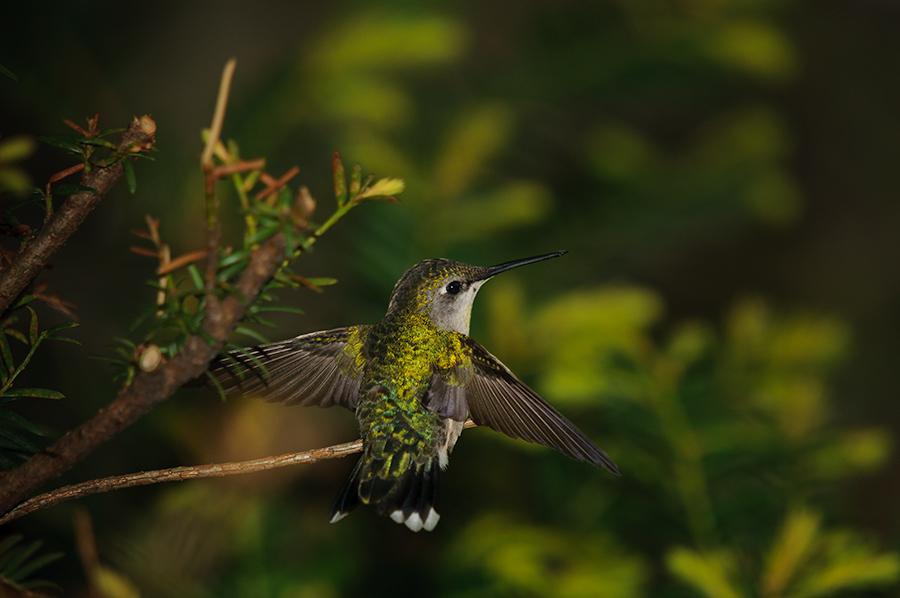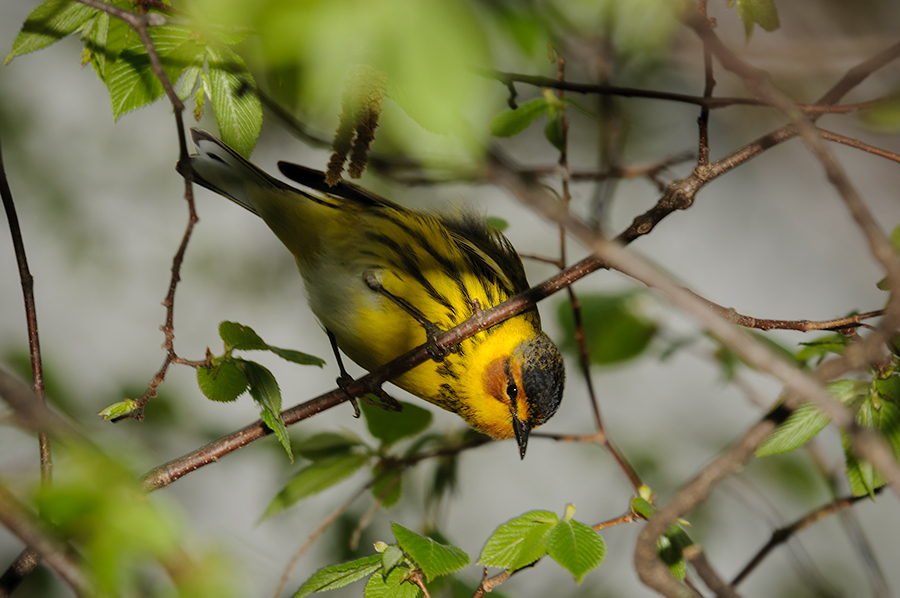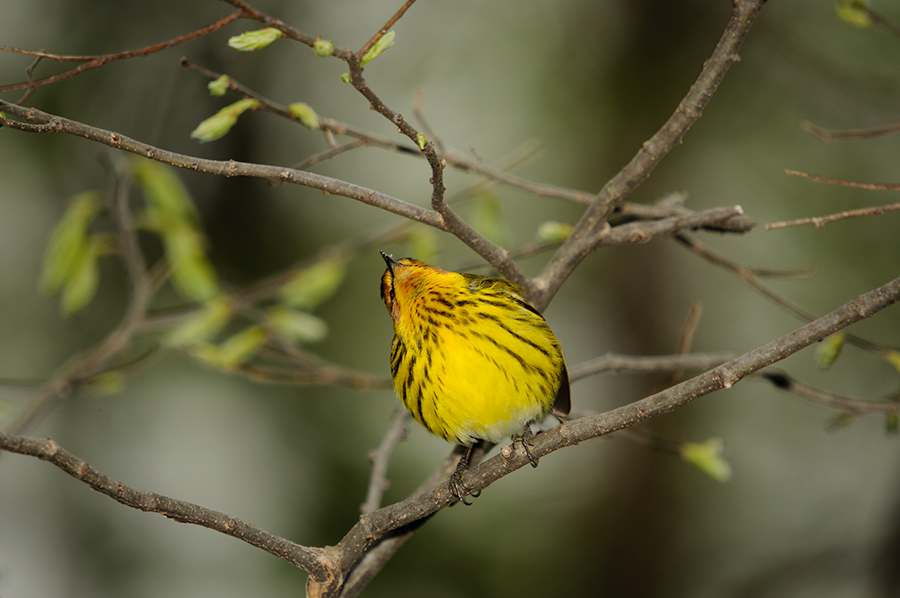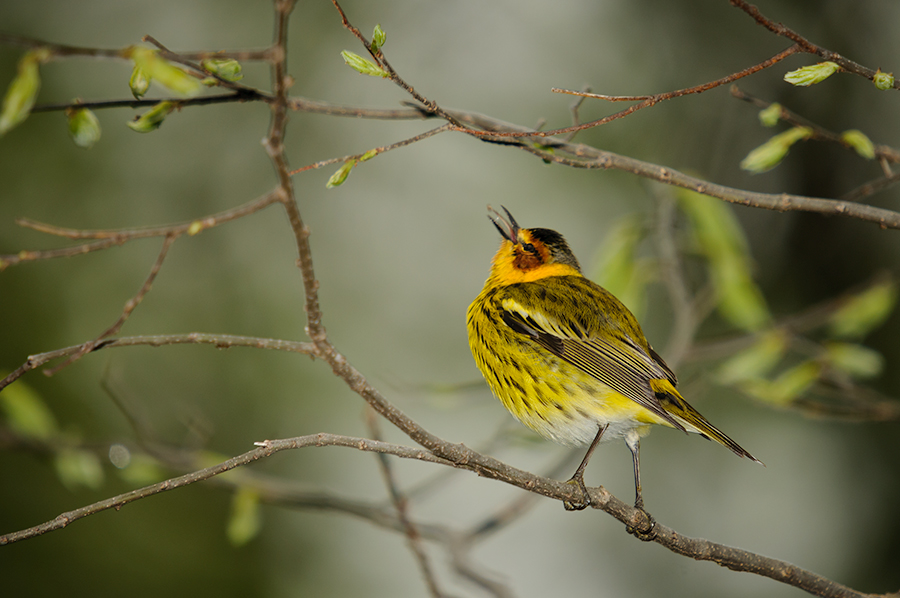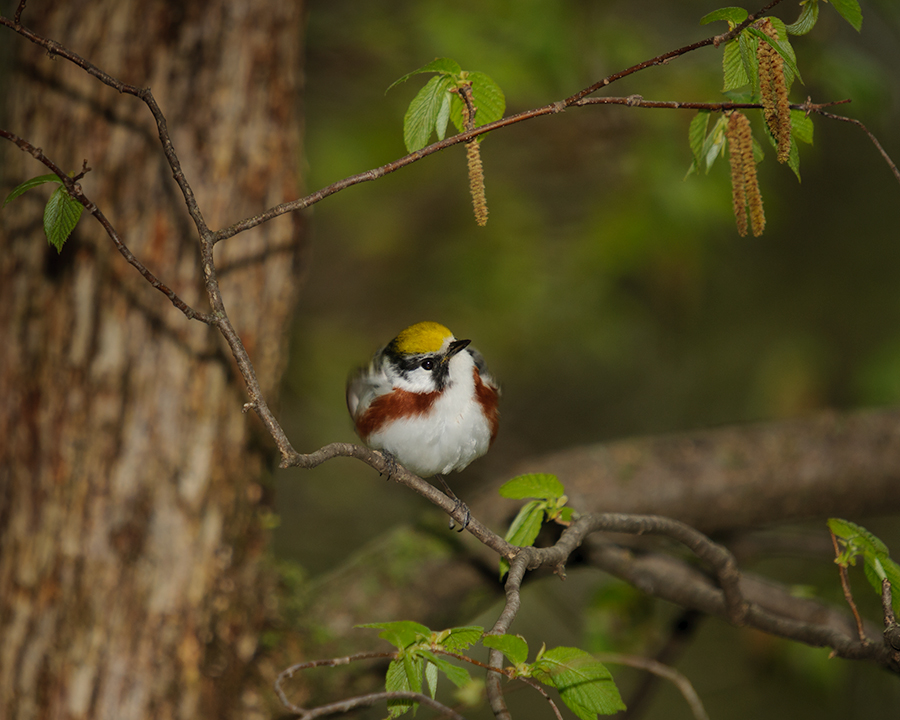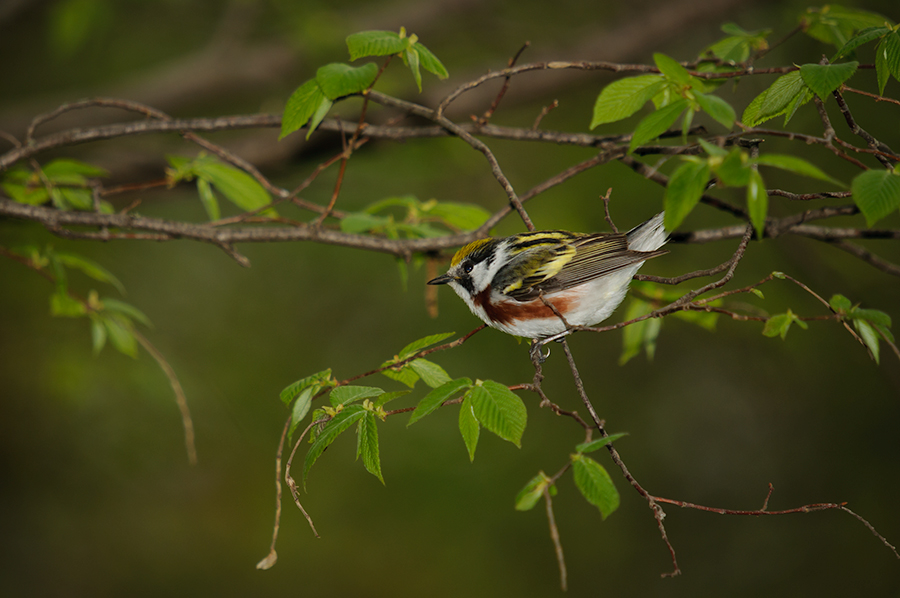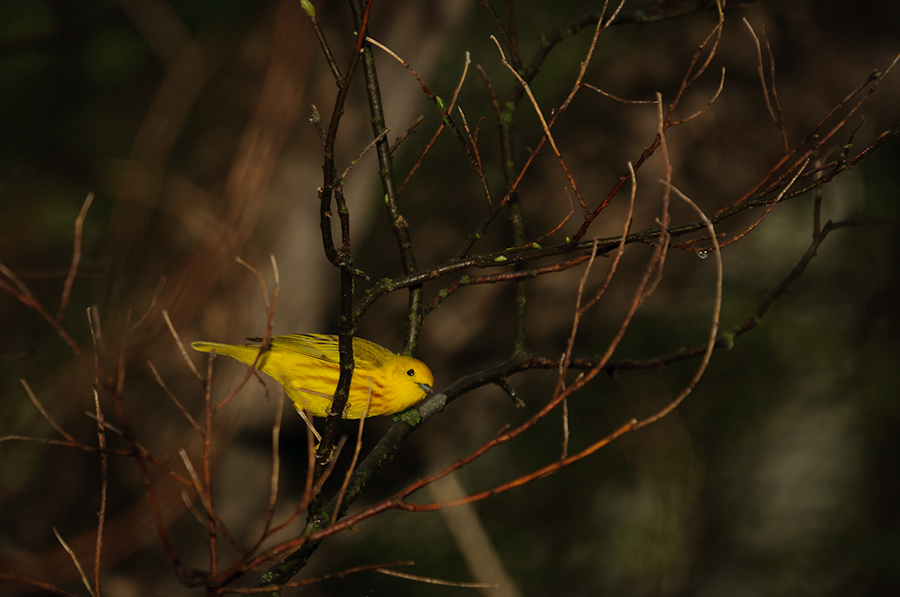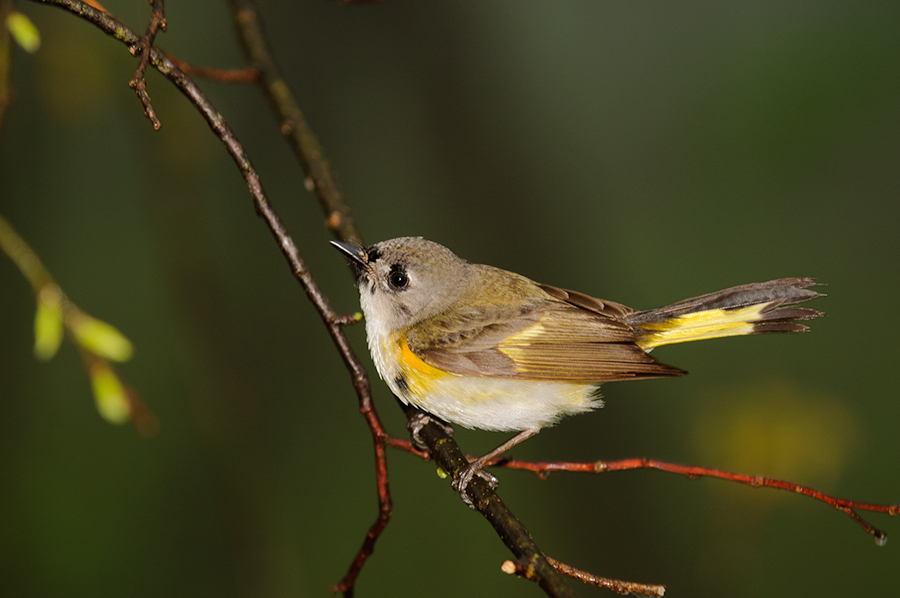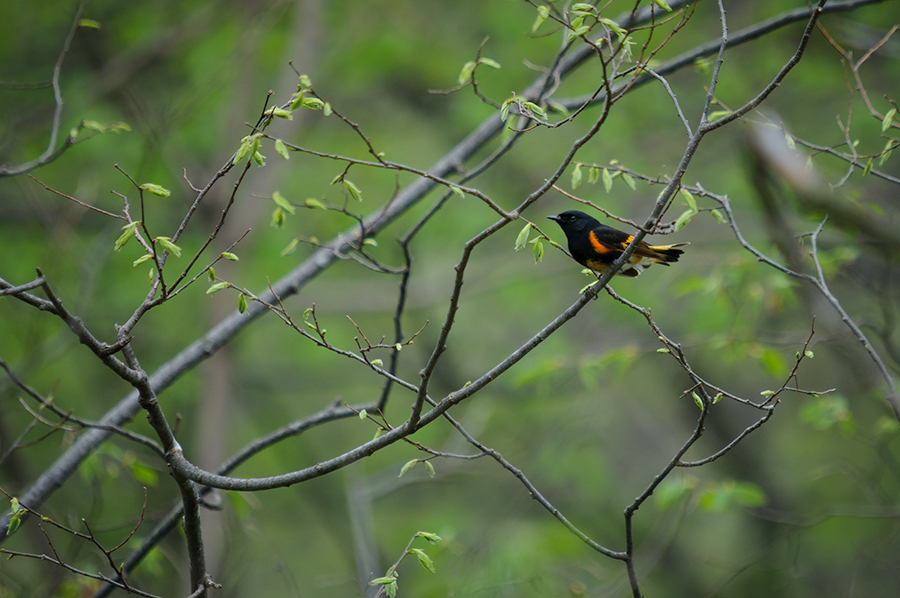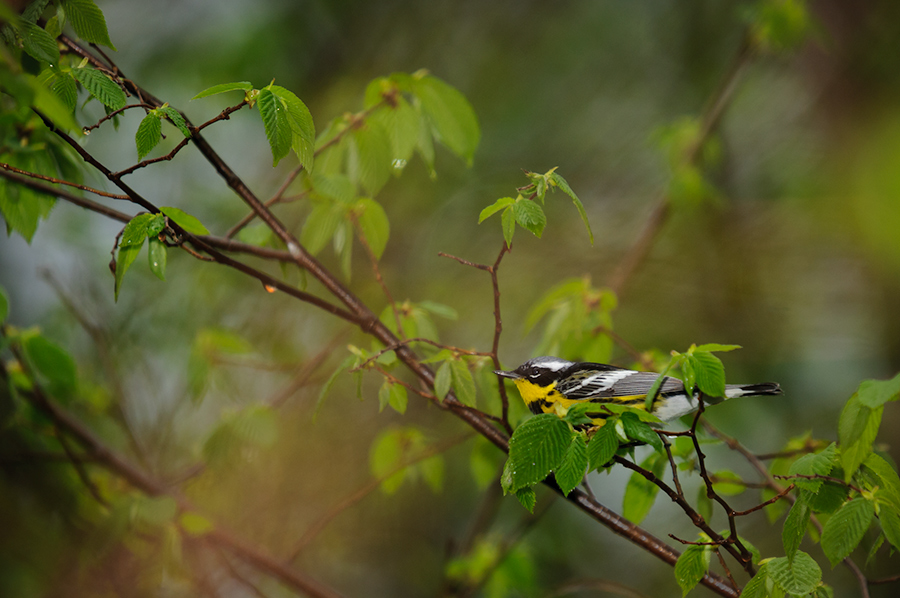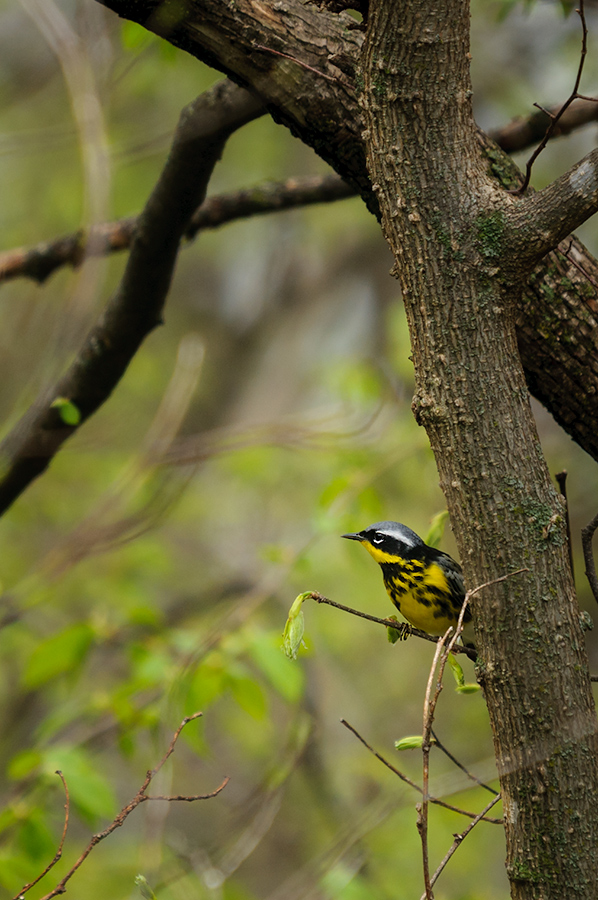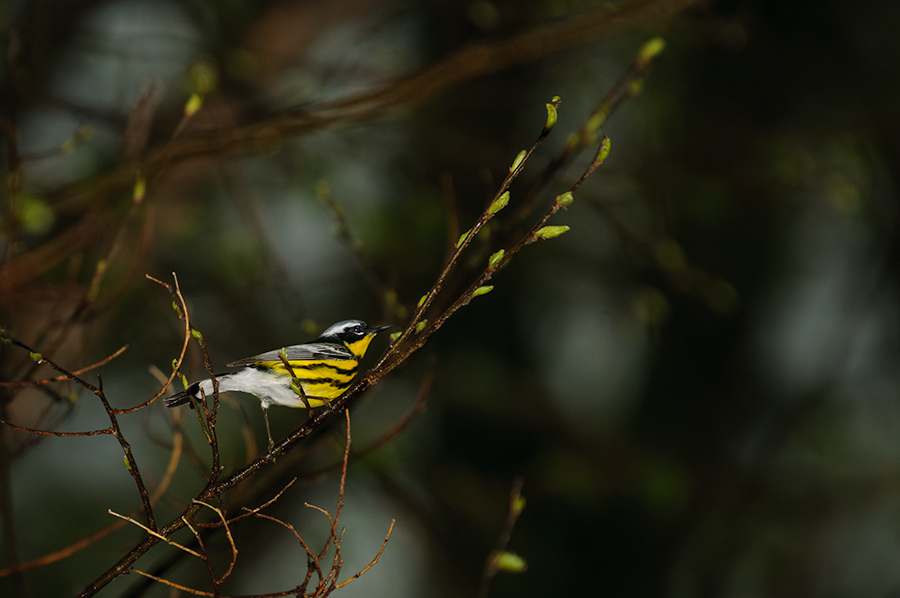
Last week, while shooting little warblers like a maniac, I recognized a flycatcher sitting on a branch not very far from where I stood. First I thought it was the Eastern Phoebe that we see here all the time. I made a few clicks because the bird was much closer than the phoebe usually is, but it wasn’t before I looked at the photos on the computer screen that I realized that this bird was an Eastern Wood-Pewee. Both birds are very similar and have the typical behavior of a flycatcher. They perch on a branch or stick and as soon they see an insect they try to catch it in flight, mostly very close to the ground, and than return to the perch. How did I found out about the pewee? The Eastern Wood-Pewee has a yellow base at the lower mandible while the Eastern Phoebe’s bill is all black. There are some other small differences but for me this is the most obvious one. This is my best photo of an Eastern Wood-Pewee so far and it will definitely make it into my Iowa Wildlife Gallery as soon I will find the time to make an update…







